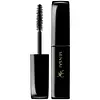What's inside
What's inside
 Key Ingredients
Key Ingredients

No key ingredients
 Benefits
Benefits

 Concerns
Concerns

 Ingredients Side-by-side
Ingredients Side-by-side

Water
Skin ConditioningCera Alba
EmollientParaffin
PerfumingCopernicia Cerifera Cera
EmollientAcacia Senegal Gum
MaskingStearic Acid
CleansingPalmitic Acid
EmollientHydrogenated Lecithin
EmulsifyingAminomethyl Propanol
BufferingButylene Glycol
HumectantPhenoxyethanol
PreservativeHydroxyethylcellulose
Emulsion StabilisingPolyimide-1
Ethylhexylglycerin
Skin ConditioningCI 77499
Cosmetic ColorantWater
Skin ConditioningParaffin
PerfumingAcrylates Copolymer
Stearic Acid
CleansingCera Alba
EmollientCopernicia Cerifera Cera
EmollientPEG-45 Stearate
EmulsifyingAcrylates/Va Copolymer
Cetearyl Alcohol
EmollientTriethanolamine
BufferingDipropylene Glycol
HumectantButylene Glycol
HumectantCaprylic/Capric/Myristic/Stearic Triglyceride
EmollientPolysorbate 60
EmulsifyingPhenoxyethanol
PreservativePvp
Emulsion StabilisingChlorphenesin
AntimicrobialDisodium EDTA
Hydroxyethylcellulose
Emulsion StabilisingSodium Dehydroacetate
PreservativeSilica
AbrasiveSynthetic Fluorphlogopite
BHT
AntioxidantHydrolyzed Silk
HumectantSerica Powder
Skin ConditioningCI 77120
Cosmetic ColorantCI 77266
Cosmetic ColorantWater, Paraffin, Acrylates Copolymer, Stearic Acid, Cera Alba, Copernicia Cerifera Cera, PEG-45 Stearate, Acrylates/Va Copolymer, Cetearyl Alcohol, Triethanolamine, Dipropylene Glycol, Butylene Glycol, Caprylic/Capric/Myristic/Stearic Triglyceride, Polysorbate 60, Phenoxyethanol, Pvp, Chlorphenesin, Disodium EDTA, Hydroxyethylcellulose, Sodium Dehydroacetate, Silica, Synthetic Fluorphlogopite, BHT, Hydrolyzed Silk, Serica Powder, CI 77120, CI 77266
Ingredients Explained
These ingredients are found in both products.
Ingredients higher up in an ingredient list are typically present in a larger amount.
Butylene Glycol (or BG) is used within cosmetic products for a few different reasons:
Overall, Butylene Glycol is a safe and well-rounded ingredient that works well with other ingredients.
Though this ingredient works well with most skin types, some people with sensitive skin may experience a reaction such as allergic rashes, closed comedones, or itchiness.
Learn more about Butylene GlycolCera alba is beeswax, or the wax used by bees to make honeycombs. It is a texture-enhancer and emollient. A study from 2003 found beeswax to be a stronger emollient than ingredients such as petroleum jelly.
As an emollient, beeswax helps hydrate the skin by creating a barrier on top. This barrier traps moisture in.
Emulsifiers help prevent ingredients from separating. This helps create consistent texture.
The structure of beeswax is mainly long-chain alcohols and the esters of fatty acids.
There are three types of beeswax: yellow, white, and absolute. Yellow is pure beeswax taken from the honeycomb. White beeswax is created by filtering or bleaching yellow beeswax. Absolute beeswax is created by treating beeswax with alcohol. Beeswax used in cosmetics are purified.
Beeswax has been used throughout history and even in prehistoric times. Some common uses for beeswax still used today are making candles, as a waterproofing agent, and polish for leather.
Learn more about Cera AlbaThis ingredient comes from a palm tree native to Brazil. This ingredient is used to thicken texture and leaves behind a film when applied.
Hydroxyethylcellulose is used to improve the texture of products. It is created from a chemical reaction involving ethylene oxide and alkali-cellulose. Cellulose is a sugar found in plant cell walls and help give plants structure.
This ingredient helps stabilize products by preventing ingredients from separating. It can also help thicken the texture of a product.
This ingredient can also be found in pill medicines to help our bodies digest other ingredients.
Learn more about HydroxyethylcelluloseParaffin is a solid created from petroleum. The term 'paraffin' can also refer to either
petroleum jelly or mineral oil.
It has natural occlusive properties which can worsen oily skin. Due to its petrolatum base, this ingredient is not fungal-acne safe.
Phenoxyethanol is a preservative that has germicide, antimicrobial, and aromatic properties. Studies show that phenoxyethanol can prevent microbial growth. By itself, it has a scent that is similar to that of a rose.
It's often used in formulations along with Caprylyl Glycol to preserve the shelf life of products.
Stearic Acid is a fatty acid. It is an emollient, emulsifier, and texture enhancer.
As an emollient, stearic acid helps soften skin. It aids the skin's protective barrier by preventing water loss. It also provides a gentle cleansing effect without stripping away natural oils.
Stearic acid may also be used to enhance the texture of products. It can add volume and stabilize ingredients such as water and oil. This can help water and oil ingredients from separating.
Sources of stearic acid include animal or vegetable fats/oils such as coconut or shea. It can be naturally found in butter, cocoa butter, shea butter, vegetable fats, and animal tallow.
This ingredient may not be Malassezia folliculitis, or fungal-acne safe.
Learn more about Stearic AcidWater. It's the most common cosmetic ingredient of all. You'll usually see it at the top of ingredient lists, meaning that it makes up the largest part of the product.
So why is it so popular? Water most often acts as a solvent - this means that it helps dissolve other ingredients into the formulation.
You'll also recognize water as that liquid we all need to stay alive. If you see this, drink a glass of water. Stay hydrated!
Learn more about Water